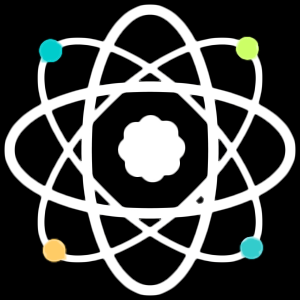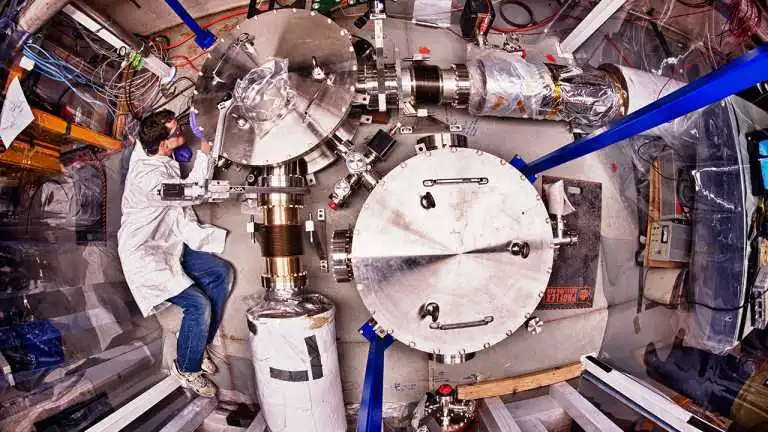The new High level Photon Source at Argonne Public Lab gives first bar to clients.
Following a $815 million, 14-month remake, the US's head x-beam synchrotron a monstrous machine for concentrating on the nuclear design of materials and particles has reawakened. Last week, the new High level Photon Source (APS) at Argonne Public Research facility conveyed its most memorable x-beam bar to experimenters.
Once adjusted, the new APS a 1.1-kilometer-long, ring-molded atom smasher ought to be the world's most splendid x-beam synchrotron, because of a strong new plan to support the power of its electron bar, which creates the x-beams.
This is a spearheading commitment to the science and innovation," says Riccardo Bartolini, a gas pedal physicist at the German Electron Synchrotron (DESY) research facility. "They had the guts to make it happen.
Timur Shaftan, a gas pedal physicist at Brookhaven Public Research center, says, as far as execution qualities, APS is without a doubt on the ball. The new source's more brilliant and more laserlike x-beam shafts ought to empower the almost 6000 researchers who utilize the APS every year to foster new trial procedures, he says.

As high-energy electrons circle inside a synchrotron, they transmit x-beams, a piece like a soil bicycle kicking up rocks in a turn. Sparkling trillions of times more splendid than the x-beam machines utilized in medication, x-beam synchrotrons have altered various fields. For instance, scholars have utilized them to decide more than 66% of the 220,000 realized protein structures.
The original of x-beam synchrotron sources arose during the 1970s, when analysts just siphoned x-beams from gas pedals worked for molecule material science tests.
During the 1980s the main devoted x-beam synchrotrons were assembled. The 1990s brought a third era of sources, including the first APS, the European Synchrotron Radiation Office (ESRF) in France, and the Super Photon Ring-8 GeV in Japan.
They utilized more serious and minimal electron pillars to create more brilliant x-beam radiates. They likewise utilized exceptional magnets called undulators to make the electrons squirm in show and transmit more effectively than in the cruder wiggler magnets second-age sources utilized.
A fourth era of x-beam synchrotrons has now shown up. In 2016, MAX-IV, a more modest x-beam synchrotron in Sweden, sent a lot seriously centering and bowing magnets to deliver a substantially more smaller electron bar, prompting more tight and more brilliant x-beam radiates.

The ESRF went with the same pattern, introducing a ring of a comparable plan called the Incredibly Splendid Source (EBS). Finished in 2020, the ESRF-EBS eclipsed the first ESRF by an element of 100 and the first APS by about a variable of 60.
Argonne analysts were at that point creating parts for their own revamp. Beginning in April 2023, laborers tore out the old APS and introduced another gas pedal in less than a year.
The new ring's electron pillar is much more minimal than that of the ESRF-EBS; its emittance, a proportion of the bar's size and propensity to spread, is only 33% of the ESRF-Ebs'. That implies the electron shaft ought to transmit more splendid and more rational x-beams that act more like smooth waves and less like a hail of shots, Bartolini says.
Planning a machine with such a low-emittance bar raised its own concerns. As electrons wheel around a synchrotron, some fly out and are lost. That debilitates the electron bar and darkens the x-beams, as well. Early x-beam synchrotrons managed this issue by unloading the pillar a few times each day and beginning once again.
The first APS spearheaded a method called "top up" that renewed the electron bar consistently or two so it could convey x-beams of steady brilliance, 24 hours every day. Yet, that method won't work in the new machine.

Inside a synchrotron, the electrons circumvent in little bundles. Top up requires finding the most exhausted pack and reestablishing it by infusing electrons that sink into it. In the first APS, extra electrons must be infused to inside 15 millimeters of the bundle, says Michael Borland, a gas pedal physicist at Argonne. In the new APS that window is under 5 millimeters too little an objective to hit, he says.
All things considered, Borland and partners executed a plan called "trade out," in which high voltage terminals remove the exhausted pack from the shaft totally and supplant it with a new full one. "That permits you to live with this tiny infusion opening," Borland says. The move is more enthusiastically than it sounds, as it should be finished with picosecond accuracy.
Bartolini predicts trade out will be utilized at other fourth-age x-beam synchrotrons a work in progress. Those incorporate China's High Energy Photon Source, which ought to begin tasks one year from now, and a proposed reconstruct of DESY's PETRA-3 source, which Bartolini is dealing with. "I can't commit that we will do the equivalent precisely," he says, "yet I'm almost certain that different undertakings are checking comparable plans out."
The ESRF will probably not carry out trade out, be that as it may. Wedging in the imperative terminals would be troublesome in the 844-meter ring, says Qing Qin, head of the ESRF's gas pedal and source division.
Be that as it may, he says, ESRF physicists are investigating the chance of introducing extra magnets to concentrate the electron bar all the more firmly in the hearts of the undulators, which ought to expand the brilliance of the x-beam radiates.
Since x-beam synchrotrons serve enormous networks that generally commotion for more shaft time, the opposition between the ESRF and the APS is well disposed, Qin notes. The new APS is a "truly thrilling machine with an extremely encouraging future for the clients," he says. "I praise them on their magnificent work.

